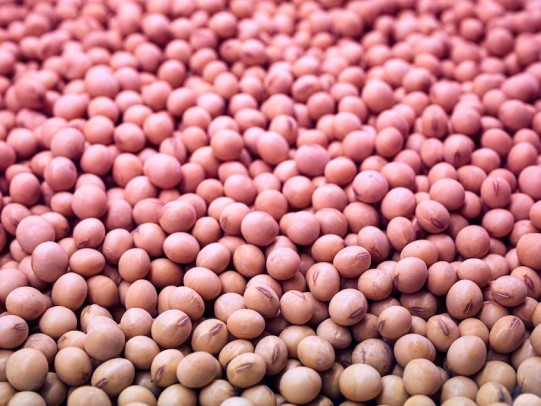While more people are exploring a more plant-based diet to enhance their well-being, soy foods like edamame, milk, tofu, and meat substitutes, such as tempeh, are becoming relatively prevalent. Even though much can be said about the modern-day alternatives, we can’t take this away from soy. Soy is reckoned as a whole source of protein and comprises all vital amino acids the body can’t produce. On the other hand, for vegetarians, vegans, and those who fall under the category of veg-curious, unprocessed soy foods are packed with protein that can successfully replace dairy and meat.
That being said, many conflicting theories might make you question just how ideal soy foods are for you. As a result, let’s sit back with a glass of soy milk and a couple of slices of tofu peanut butter pie and chew over.
How nutritious is soy?
For a significant part, you can consume that sauteed tofu and sip a soy latte without hassle. For everyone still digging into a few facts, soy is one of the excellent sources of plant-based fiber and protein. Not only is it low in saturated fat, but it also offers a more feasible way to consume a balanced diet. In other words, it is a potent source of fiber, potassium, magnesium, and B vitamins. Additionally, the natural supplement consists of plant estrogens, referred to as isoflavones, which studies state, might help reduce the symptoms of breast cancer in post- and pre-menopausal women.
Soybeans offer factoring figures of minerals and vitamins essential for alleviating chronic diseases, coupled with fiber that assists in keeping you satisfied and content. Wondering about its nutritional breakdown? Here you go with some astounding facts and figures.
- Tofu: A half-cup of firm tofu comprises 94 calories, relatively over 5g of fat, 10g of protein, and 227 mg of calcium.
- Soy milk: One cup shall consist of 110 calories, hardly any fat, and 8g of protein.
- Tempeh: A half-cup consists of approximately 110 calories, 9g of fat, and about 15 g of proteins.
- Miso: A paste crafted from fermented soybeans, miso comprises (per tablespoon) tentatively 2.2g of protein, 33 calories, and 1g of fat.
Indeed, one important thing to note while choosing soy food is that whole foods have always been ideal. Several provocative writeups about its risks are based on consuming products made from isolates, like meat alternatives and protein bars or supplements. In this case, soy protein isolate protein extracts are isolated from the soybean, which leads to major setbacks. This is the argumentative point that proves that whole and unprocessed soy produces more health benefits compared to isolates.
Why is soy so controversial?
To understand soy’s environmental and human hindrances, it’d be ideal to ride through the early 1990s when soy first started hitting prominent figures. During that period, several experts stated that soy had the strength to fight issues such as heart disease, obesity, and cancer. More so, consumers in Asia eat a lot of soy. On the contrary, studies stated that such populations had considerably meager rates of diseases, obesity, and breast cancer than users in the United States. Evidently, soy was an excellent supplement, right?
That’s not appropriate. Such research numbers only determined association and not causation. Just because users who eat soy are healthier than people on the other side does not imply that consuming soy has led to their superior health. Infinite factors such as lifestyle, genetics, and the entire diet can affect the numbers.
Soy’s health benefits
When it comes to soy foods, it’s challenging to be black and white. As with every other food, people still do not know everything. Studies suggest that the average consumption of minimally processed soy is not only suitable for a user but also induces certain benefits.
1. Decreases cancer symptoms or risks
Soy tends to consist of phytoestrogens and abundant estrogen levels, which link to breast cancer. That being said, food sources of plant estrogens and soy present in soy don’t enhance the risk of cancer symptoms. Ultimately, one of the investigations stated that soy consumption alleviated breast cancer risk for many women.
Moving on, soy can protect against various other cancer types too. Some findings show that the supplement can lower gastrointestinal cancer risks and induce a protective effect.
2. It may boost hot flashes and fertility.
Soy is one of the supplements that can be advantageous for fertility, provided you do not eat too much. Consuming more than 150 mg of soy isoflavones daily is linked to reduced ovarian operation. On the flip side, average consumption won’t do any harm.
3. May protect your heart.
Another research states that soy can reduce bad cholesterol levels. However, in 2008, the AHA noted that there was insufficient evidence to declare that soy alleviated the risk of certain heart diseases.
Consequently, one beneficial aspect of consuming soy comes from what has been replaced on the plate. Swapping animal-driven nutrition for plant-based food like soy can lower the intake of saturated fat and increase the fiber intake.
The verdict
Add everything up, and you will note how soy became one of the sources of mass dietary confusion in the modern world. Even though soy should be on your plate, its overprocessing can cause environmental havoc. Eating any type or form of food is a responsibility on its own.




